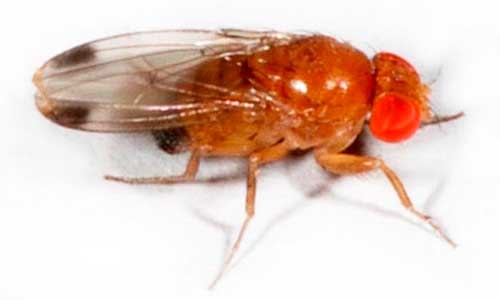Spotted wing drosophila (Drosophila suzukii) is a close relative of the common vinegar fly. It was unheard of in China until about five years ago.
(continued from last month)
Its appearance followed a substantial increase in cherry plantings—now around 80,000 hectares.
Cherries are one of those crops which are sufficiently profitable to reverse the drift of the rural populations of China to the cities.
Spotted wing drosophila is also a pest in the red bayberry which is a traditional and important tree fruit grown in the vicinity of Shanghai.
Although mentioned as a pest in grapes in USA and Europe, it does not appear to be of much consequence in that crop in China.
Control of spotted wing drosophila
This insect is a serious pain in the pronotum. It comes in very close to harvest when choice of insecticides is limited.
Researchers in USA have identified food based attractants that work as monitoring tools. Trapping out the spotted wing drosophila has not been successful in USA.
They say that although they can trap large numbers of flies, 90% + stay on the outside of the traps and disperse to attack the crop.
Some European companies claim to have had success with traps but to my knowledge, the results have not been published in any scientific literature.
Promising results for control
Sinogreen has developed a product which uses one of the best attractant blends in a bag with a contact insecticide on the outside.
We trialed the system in Qinghuangdao, an important cherry growing area east of Beijng, and had very promising results.
With an insect like this, insecticide resistance can develop rapidly.
Movement and threat to Aus & NZ
Spotted wing drosophila is not a strong flier but can move in the wind like aerial plankton.
A few flies could easily hitch a lift in an international aircraft without being noticed. Australian and New Zealand bush have wild raspberries and blackberries and a host of other wild fruits through most of the year. Once in, it will stay with us.
Can we keep it out?
AQIS is well aware of this insect and they are doing their best to keep it out.
The fact that it has spread throughout the world means that sooner or later, an invasion of Australia and New Zealand is inevitable.
Growers of susceptible crops such as cherries, plums and berries should be vigilant and contact local experts if they find fruit with suspicious symptoms.
See this article in Tree Fruit April 2017




















